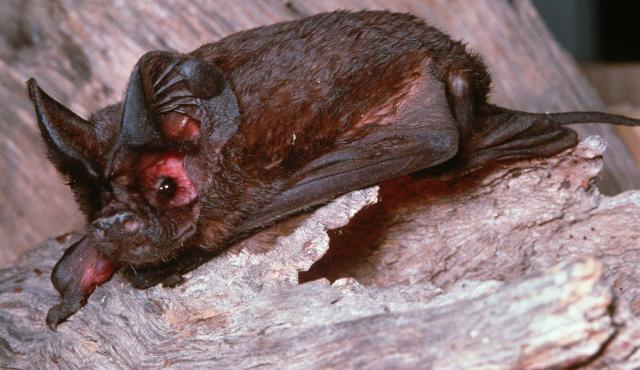
White-striped Freetail Bat
Tadarida australis
| Details | |
|---|---|
| Type | Mammal |
| Group | |
| Biology | Roosts under peeling bark and in tree hollows. Females form colonies of approximately 20 while males roost alone or in small groups. Hibernation occurs over winter. One or two young are born in October-November. They forage below the canopy amongst vegetation. |
| Distinctive Markings | A distinct white stripe of fur occurs along each side of the body under the wings. May also have white patches on the chest. |
| Taxonomy | |
|---|---|
| Phylum | Chordata |
| Class | Mammalia |
| Order | Chiroptera |
| Family | Molossidae |
| Genus | Tadarida |
| Species | australis |
Largest of all the free-tail bats, bats which have part of their bony tail extending from the tail membrane. One of the few microbats with calls able to be heard by humans.
| Interesting Facts | |
|---|---|
| Diet | Carnivore. Moths, bugs, grasshoppers, ants and non-flying beetles. |
| Habitat | Grasslands, forests, woodland, shrubland and urban areas. |
| Native Status | Native to Australia |